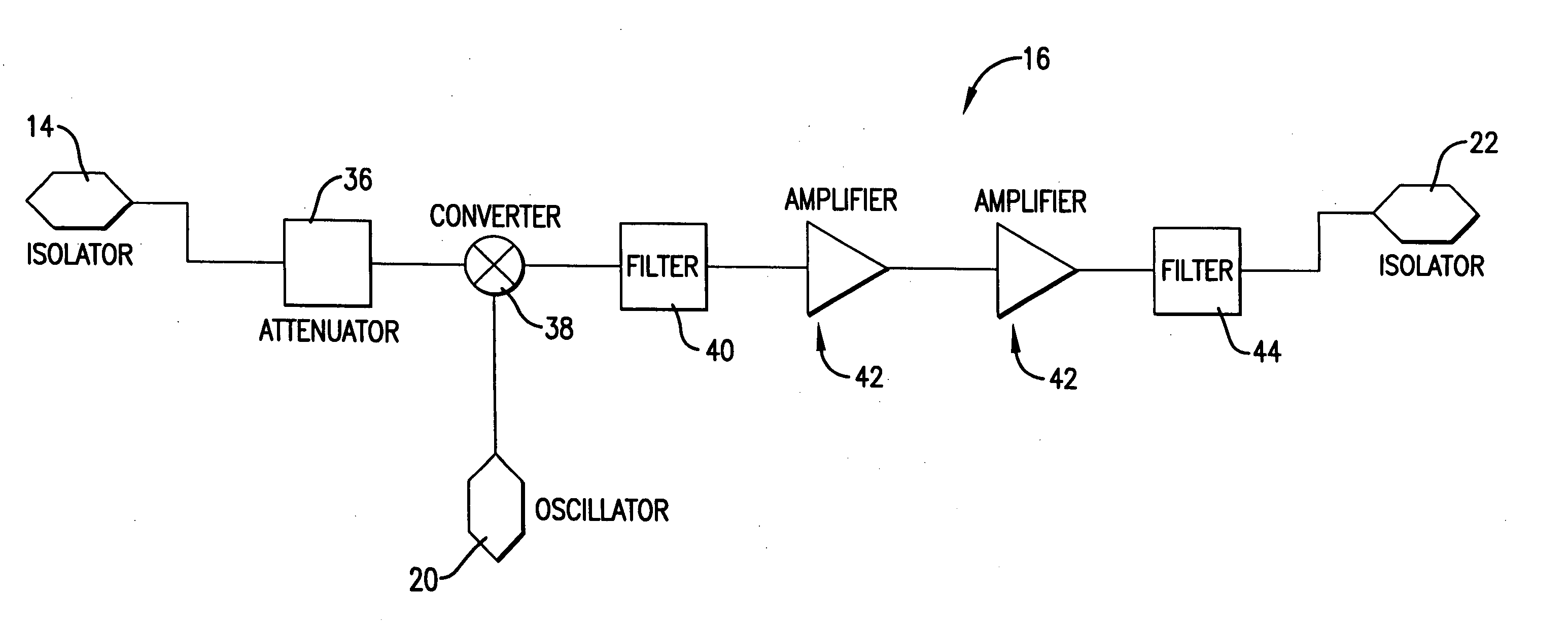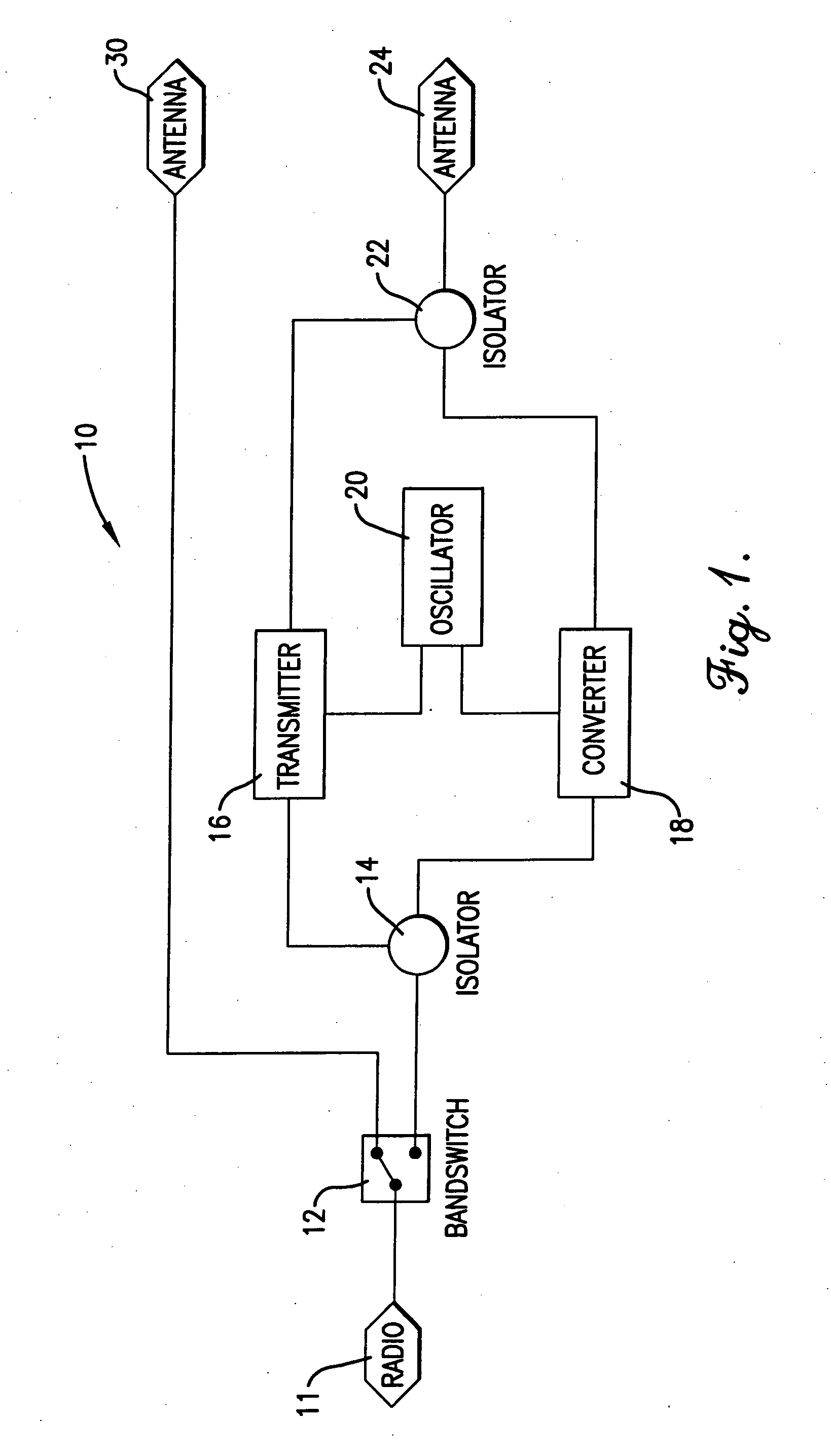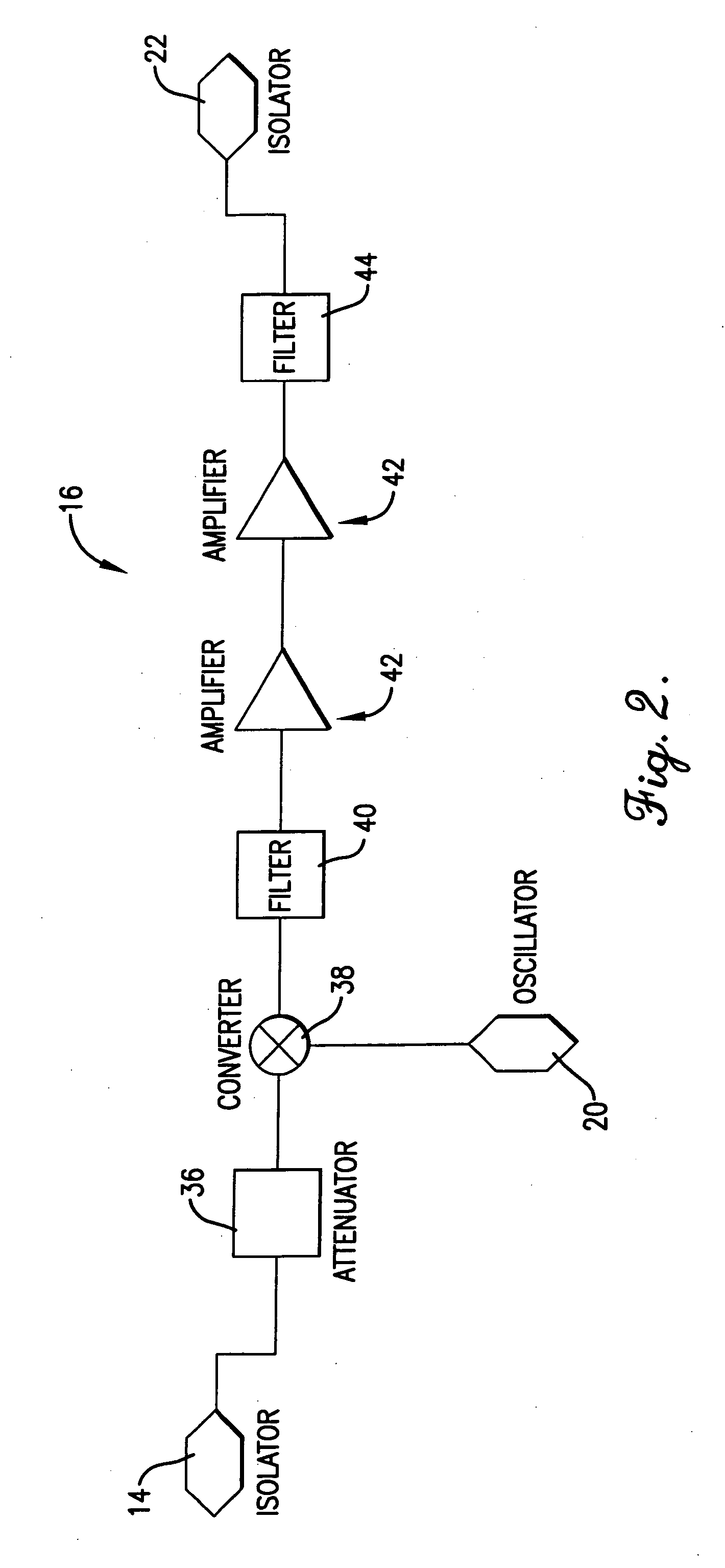ISM band to U-NII band frequency transverter and method of frequency transversion
a frequency transverter and frequency transverter technology, applied in the field of frequency translators, can solve the problems of increasing interference from a variety of devices, overcrowded 900 mhz and 2.4 ghz unlicensed frequencies, and increasing the number of fixed wireless local area networks (lans), so as to reduce the loss tangent, reduce the interference of other wireless devices, and increase channel utilization and reuse
- Summary
- Abstract
- Description
- Claims
- Application Information
AI Technical Summary
Benefits of technology
Problems solved by technology
Method used
Image
Examples
Embodiment Construction
, below.
BRIEF DESCRIPTION OF THE DRAWINGS
[0023] A preferred embodiment of the present invention is described in detail below with reference to the attached drawing figures, wherein:
[0024]FIG. 1 is a block diagram of a preferred embodiment of the frequency transverter of the present invention;
[0025]FIG. 2 is a block diagram of a transmuter component of the frequency transverter of FIG. 1;
[0026]FIG. 3 is a block diagram of a converter component of the frequency transverter of FIG. 1;
[0027]FIG. 4 is a block diagram of a multiplier portion of a local oscillator component of the frequency transverter of FIG. 1;
[0028]FIG. 5 is a block diagram of a fundamental phase-locked-loop portion of the local oscillator component;
[0029]FIG. 6 is a diagram of a wireless communications link setup utilizing the frequency transverter of FIG. 1; and
[0030]FIG. 7 is a block diagram of a fixed communications link setup utilizing the frequency transverter of FIG. 1.
DETAILED DESCRIPTION OF A PREFERRED...
PUM
 Login to View More
Login to View More Abstract
Description
Claims
Application Information
 Login to View More
Login to View More - R&D
- Intellectual Property
- Life Sciences
- Materials
- Tech Scout
- Unparalleled Data Quality
- Higher Quality Content
- 60% Fewer Hallucinations
Browse by: Latest US Patents, China's latest patents, Technical Efficacy Thesaurus, Application Domain, Technology Topic, Popular Technical Reports.
© 2025 PatSnap. All rights reserved.Legal|Privacy policy|Modern Slavery Act Transparency Statement|Sitemap|About US| Contact US: help@patsnap.com



